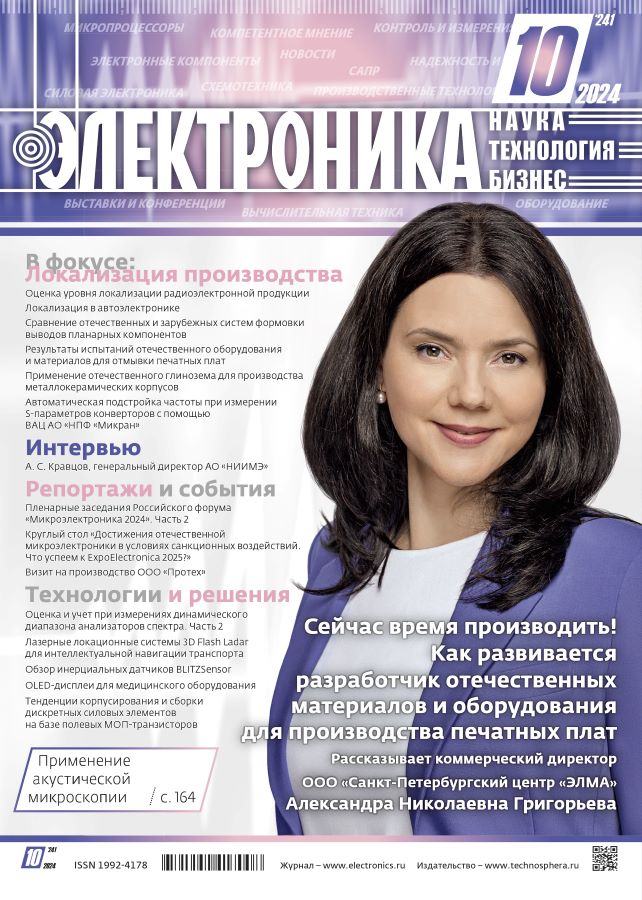Acoustic microscopy: detecting hidden defects
- Авторлар: Varlamov P.1, Lelyaev V.1
-
Мекемелер:
- Компания «Глобал Микроэлектроника»
- Шығарылым: № 10 (2024)
- Беттер: 164-167
- Бөлім: Reliability and validation
- URL: https://journals.eco-vector.com/1992-4178/article/view/653404
- DOI: https://doi.org/10.22184/1992-4178.2024.241.10.164.167
- ID: 653404
Дәйексөз келтіру
Аннотация
The article discusses one of the most effective methods of microelectronic component non-destructive testing – ultrasonic acoustic microscopy, used to detect hidden defects.
Толық мәтін
Авторлар туралы
P. Varlamov
Компания «Глобал Микроэлектроника»
Хат алмасуға жауапты Автор.
Email: vpi@global-micro.ru
ведущий инженер
РесейV. Lelyaev
Компания «Глобал Микроэлектроника»
Email: VL@global-micro.ru
руководитель направления
РесейӘдебиет тізімі
- Халиуллина А.В., Хайрутдинов Б.И. Ультразвук в медицине. Учебное пособие. Казань, 2022. 117 с.
- Park S. AcouLab Semiconductor Basic Education 2008.
- Бояркин Е.В., Кочетков А.С., Бехер С.А. Физические основы ультразвукового контроля. Руководство по подготовке к экзамену. Учебное пособие. Новосибирск: Издательство СГУПС, 2018. 38 с.
- Ефимов И.Е., Козырь И.Я., Горбунов Ю.В. Микроэлектроника. Физические и технические основы, надежность. М.: Высшая школа, 1986. 464 с.
Қосымша файлдар
Қосымша файлдар
Әрекет
1.
JATS XML
2.
Fig. 1. The results of scanning the microcircuit with an ultrasonic wave: depth slice and 3D reconstruction
Жүктеу (230KB)
Жүктеу (149KB)
Жүктеу (108KB)
Жүктеу (146KB)
6.
5. Radiation patterns of ultrasonic waves of various frequencies: a – 500 kHz; b – 1 MHz; c – 2 MHz; d – 5 MHz (transducer diameter 5 mm, wave propagation velocity 1480 m/s)
Жүктеу (173KB)
Жүктеу (741KB)













